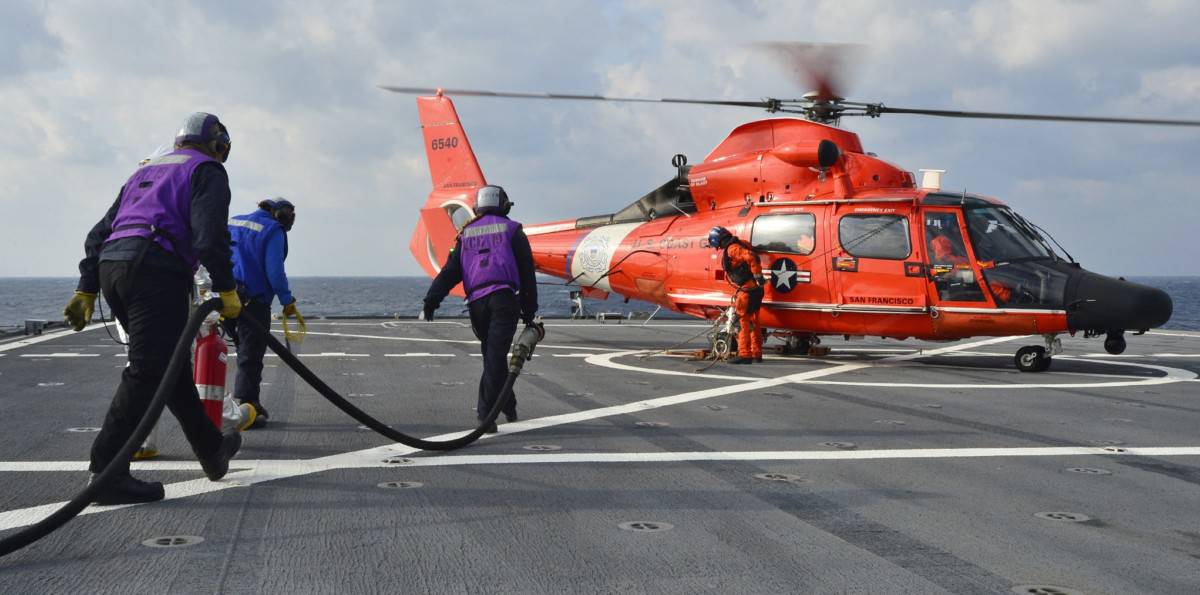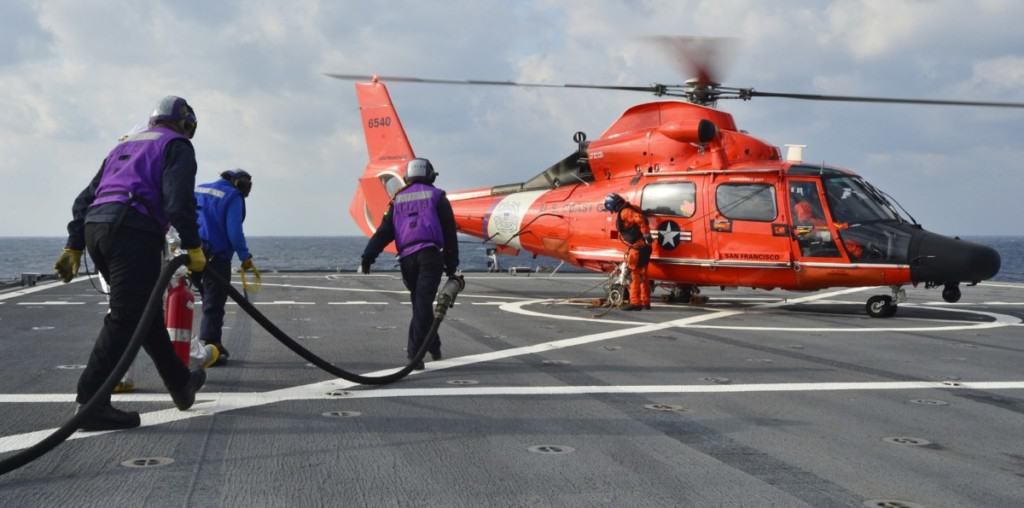
Filling the fuel tank on any aircraft can get expensive especially if you are the owner or are have to pay for the fuel at a remote location. The larger the helicopter, the bigger the engine and the more engines it has will dictate how much fuel it burns each hour.
When I have to fuel up from a supplier that the company does not have an account with it is a great way to collect points on my visa! But be sure so have room on the card, especially if you are in a remote airport!
Smaller piston-powered helicopters will burn anywhere from 5-20 gallons/19-76 liters of fuel per hour whereas larger turbine-powered helicopters can burn between 25-1100 gallons/95-4165 liters of fuel per hour. The more engines a helicopter has, the more fuel it burns.
Read on to find out some cool facts and figures on helicopter fuel!
Typical Helicopter Fuel Burn Rates:
| Helicopter Type | Average Fuel Burn |
|---|---|
| Robinson R22 | 8 GPH / 30 LPH |
| Robinson R44 | 15 GPH / 57 LPH |
| Bell 206 Jetranger III | 27 GPH / 102 LPH |
| AS350 B3 Astar | 50 GPH / 189 LPH |
| Bell 212HP | 100 GPH / 379 LPH |
| Bell 205A-1++ | 90 GPH / 341 LPH |
| Sikorsky SK61 | 170 GPH / 644 LPH |
| Sikorsky SK92 | 180 GPH / 681 LPH |
| Boeing Chinook CH-47 | 400 GPH / 1514 LPH |
| Mil Mi-26 | 1100 GPH / 4164 LPH |
How Much Fuel Does a Helicopter Burn?
Helicopters all vary in size and the number of engines they have. The bigger the helicopter, the larger its engine or engines and the more thirsty they become.
One of the first questions I often get asked when I’m flying is “How much fuel does your bird burn“?
My current machine is a Eurocopter/Airbus AS350 B2 which is a single-engine helicopter and is one of the most popular and versatile machines used across the globe.
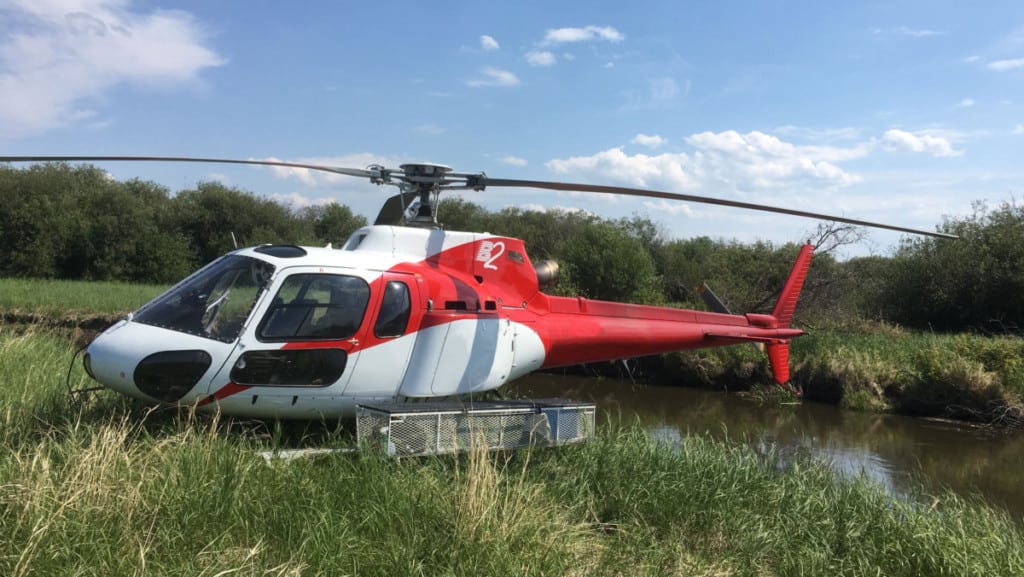
This helicopter burns on average around:
- 180 Litres per hour
- 47 US Gallons per hour
- 315 Pounds per hour
- 143 Kilograms per hour
Helicopters burn the most amount of fuel when using the most power and this occurs at two places in the ‘Power Required Curve’.
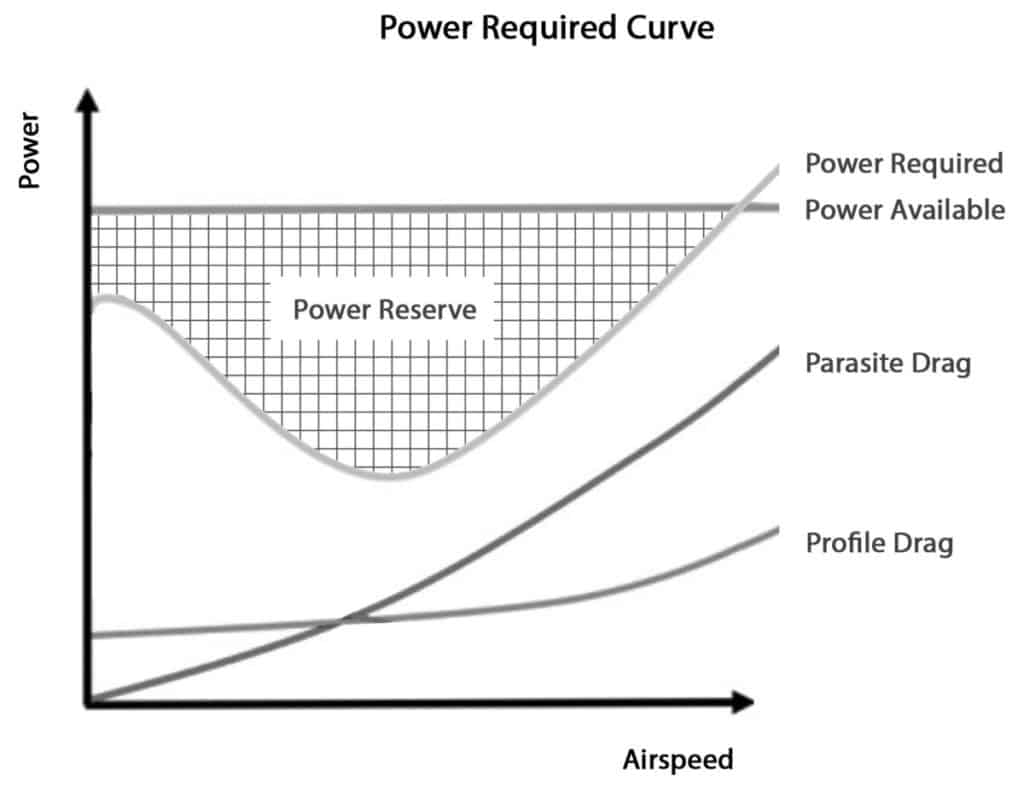
The first place is when the helicopter is hovering and full of people, lifting a heavy load off the ground with a longline or slings or hovering high in the mountains. This is at the Zero Airspeed point of the curve.
The second place is when the helicopter is traveling at high speed and having to overcome the drag created by the fuselage (Parasite Drag) and the drag created by the higher pitch angle of each rotor blade as it moves through the air (Profile Drag).
Learn More…
Try These Articles:
* How Much Can a Helicopter Lift? 20 Helicopters Compared!
* How Fast Can a Helicopter Fly? Top 10 Civilian & Military Comparisons
How Much Fuel Does a Helicopter Hold?
Most helicopters are designed to hold enough fuel for between 1.5 – 3 hours of flying and a 20 minute reserve. The more fuel the helicopter burns the larger the fuel tank is made to achieve this duration. Additional fuel tanks can be fitted to extend the flight time for ferry flights and Search & Rescue.
Everything in aviation is all about compromise. A helicopter that can fly for long periods of time needs a lot of fuel, but that fuel takes up space and weight.
Also, the aircraft designers try to keep the fuel as close to the main rotor mast as possible to stop the aircraft’s center of gravity drastically changing as the fuel tank empties.
Most helicopters will have a fuel tank that will last approximately 21/2 – 3 hours of operational flying with a 20 min reserve. Which is good because after 2 hours I’m ready to stretch my legs!
Some of the larger helicopters that are used to fly to offshore oil & gas platforms can have additional fuel tanks fitted in them. The Sikorsky S92 and the Agusta A139 are prime examples of this.
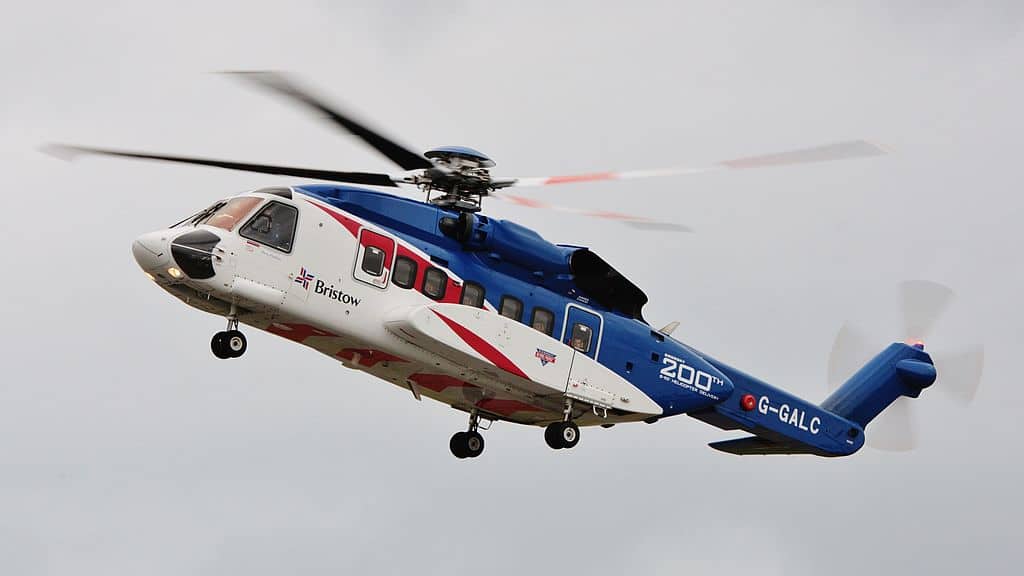
As helicopters begin to fly further, the oil & gas platforms begin to spread further in greater numbers. The farthest rigs can only be serviced by boat or by refueling the helicopters at other platforms before continuing on.

Join My Newsletter & Get Great Tips, Information and Experiences To Help You Become a Superb Pilot!
What Type of Fuel Does a Helicopter Burn?
Helicopters use two types of fuel depending on the type of engines they have. Piston-powered helicopters use a gasoline-based fuel called AvGas 100LL which is blue in color. Turbine-powered helicopters use a kerosine-based fuel called JetA and this is clear in color.
AvGas is a high-octane gasoline fuel with a higher refinement which provides for a cleaner, filtered fuel that is also used in most small planes.
The most common AvGas used in aviation today is 100LL. This is 100 octane Low Lead and it is dyed Blue to ensure pilot has the right fuel before filling up their aircraft.
Jet Fuel is the second type of fuel used in helicopters. This is the same fuel used in the large airliners you fly on to go on vacation. It is used in all aircraft that have a gas turbine engine.
Most helicopters that can carry 5 passengers or more will have a gas turbine engine. For a piston engine to create enough power to lift a heavy helicopter it would be very large and weigh a lot. The gas turbine engine provides much more power for its weight.
Jet fuel is a kerosene-based fuel that mainly comes in two types. Jet-A and Jet-A1. Jet-A1 is an improved fuel over Jet-A in that it can be used down to -47°C (-40°F) rather than -40°C (-53°F) of Jet-A. Another addition to Jet-A1 is that it contains an anti-static additive to help prevent electrical static build-up to make it safer.
Jet fuel is clear and smells like diesel. When filling up a helicopter it is very easy to instantly tell what kind of fuel you have before putting it into your tank. Putting AvGas into a gas turbine helicopter or vice versa is a surefire way to make the aircraft engineer see red, especially if you have ran the engine with it before realizing your mistake!
Gas turbines burn fuel at a much higher rate compared to piston engines so their fuel burn rate is much higher and thus the fuel cost to operate a turbine-powered helicopter is much higher.
This is the main reason that small, piston-engined aircraft are popular for training and private ownership.
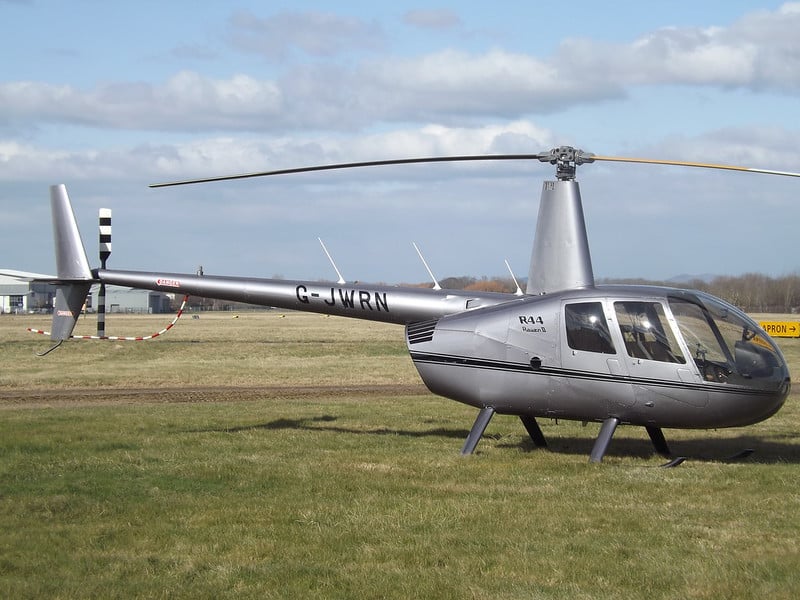
Whenever a pilot goes to fuel an aircraft, especially from an unknown source like another airport, remote fuel bowser or fuel drums there is a simple acronym drilled into us at flight school – COWS
C = Color – Blue (100LL AvGas) or Clear (Jet Fuel)
O = Odor – Diesel Smell (Jet Fuel) or Gasoline Smell (AvGas)
W = Water – Water in Fuel is a No-No
S = Sediment – Sediment in Fuel is a No-No
Learn More…
Try These Articles:
* Are Helicopters Faster Than Cars? Well, It Depends…
* How Much Do Airplanes Weigh? (With 20 Examples)
How Much Does It Cost To Fill a Helicopter?
The smallest single-seat helicopter like the Mosquito XE has a fuel capacity of 12 gallons/45 liters and costs around $60 to fill. The largest helicopter in the world, the Mil Mi-26T has a fuel tank capacity of 3170 gallons/12,000 liters and costs around $13,315 to fill.
Just like regular gas for your car, the price of both AvGas and Jet fuel fluctuates and can cost different prices in different places.
In 2020 the price of fuel in the lower 48 is as follows:
100LL AvGas = From $4.60 to $5.34 per gallon
Jet A Jet Fuel = From $3.90 to $4.54 per gallon
Source: 100LL.com
The thing to consider is the more remote the fuel cache, the more the fuel will cost. When flying up in the Northern Arctic regions and refueling from airports it can be expensive.
For Example:
PABR – Wiley Post-Will Rogers Memorial Airport – Barrow, Alaska
100LL = $11.40 per Gallon
Jet A1 = $5.90 per gallon
When working in an even more remote location and drums of fuel have to be brought out by helicopter, then the fuel price can get even crazier!
It’s not unheard of to have drummed Jet A fuel at $30 per gallon and 100LL AvGas close to $50 per gallon!
Cost Example
Let’s look at how much fuel alone would cost you if you had to pay the fuel bills on the machines listed above:
AvGas based on an average of $5.00 per gallon
Jet A1 based on an average of $4.20 per gallon
| Helicopter Type | Average Fuel Burn | Fuel Per Hour | Cost To Fill |
|---|---|---|---|
| Robinson R22 | 8 GPH / 30 LPH | $40/hour | $132 |
| Robinson R44 | 15 GPH / 57 LPH | $75/hour | $233 |
| Bell 206 Jetranger III | 27 GPH / 102 LPH | $113/hour | $383 |
| AS350 B3 Astar | 50 GPH / 189 LPH | $210/hour | $600 |
| Bell 212HP | 100 GPH / 379 LPH | $420/hour | $903 |
| Bell 205A-1++ | 90 GPH / 341 LPH | $380/hour | $925 |
| Sikorsky SK61 | 170 GPH / 644 LPH | $715/hour | $2,750 |
| Sikorsky SK92 | 180 GPH / 681 LPH | $755/hour | $4,200 |
| Boeing Chinook CH-47 | 400 GPH / 1514 LPH | $1,680/hour | $4,342 |
| Mil Mi-26 | 1100 GPH / 4164 LPH | $4,620/hour | $13,315 |
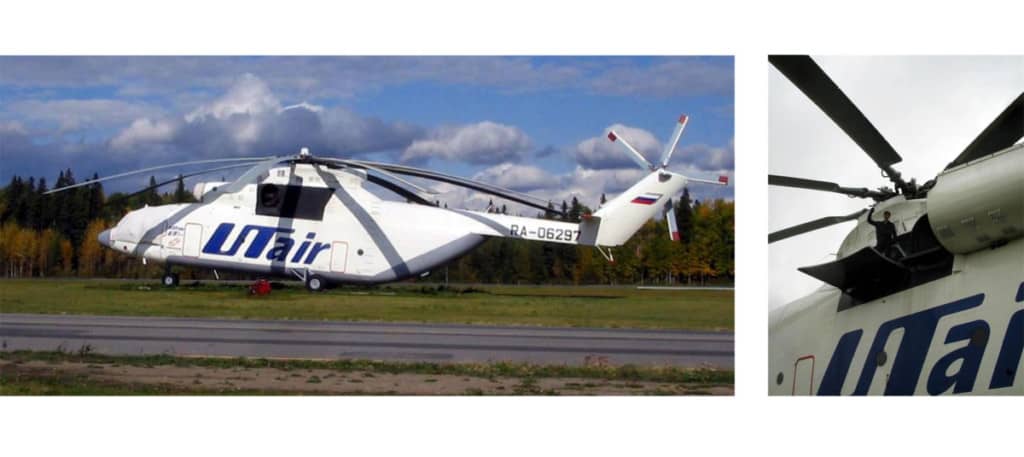
How Long Does it Take to Refuel a Helicopter?
Portable helicopter refueling pumps deliver 15 gallons of fuel per minute. Airport fuel trucks deliver up to 50 gallons per minute. A helicopter requiring a full refuel of around 100 gallons can take between 2-7 minutes. A typical fuel stop for a helicopter is around 10-20 minutes.
By the time the helicopter has landed, shutdown, got fuel to the helicopter, refueled, and then ready for liftoff can be around 10-20 minutes. This usually gives the passengers time to use the bathroom, stretch their legs or have a small break.
Helicopters are thirsty machines, especially if it has gas turbine engine engines. Smaller helicopters using a piston-powered engine have a much slower fuel burn rate so the amount of fuel they carry is far less compared to their turbine counterparts, making them far quicker to fill up.
In the helicopter world there are three main ways that pilots get fuel into their machine:
1. Portable Fuel Transfer Pump
When working out in remote areas pilots need to refuel out of drums of fuel. These drums can be placed threre ahead of time by the helicopter company or via a fuel delivery merchant. The pilot carries onboard the helicopter a field fueling set comprising of an electric fuel pump fitted with hoses and filters.
The pilot lands, rolls up a drum or drums to the helicopter, assembles the fueling gear, and pumps the fuel from the drum into the helicopter.
Each 55 gallon fuel drum usually contains around 250 liters and these pumps run at around 15 gallons per minute, or 68 liters per minute. Depending on the size of the helicopters fuel tank and the amount of fuel the helicopter needs will dictate how long it takes to refuel, for example:
GPI Pump at 15GPM/68LPM:
| Fuel Amount | Time |
|---|---|
| 22G / 100L | 1m27sec |
| 33G / 150L | 2m12sec |
| 44G / 200L | 2m54sec |
| 55G / 250L | 3m40sec |
| 88G / 400L | 5m52sec |
| 110G / 500L | 7m20sec |
| 165G / 750L | 11m00sec |
| 220G / 1000L | 14m40sec |
On top of this, if the pilot requires more than 55gal/250l then they will require multiple drums. Usually, the most efficient way is to get one drum in place, inspected for water and sediment, and start pumping. While that drum is pumping then roll up more drums as required and get them opened and the fuel inspected so the pilot can easily move the fuel pump over to the next drum when the first is empty.
Fuelling this way is by far the slowest but when this is the only option to get fuel in remote locations you have no choice.
These fuel stops usually take around 20-40 minutes from landing to takeoff for most helicopters.
If you would like to see how this exact fuel stop is conducted see my video HERE:
2. Stationary/Temporary Fuel Bowser
When flying into a small or unmanned airport, or dedicated helicopter staging area they may contain a self-serve fuel bowser and fuel pump, very similar to how you refuel your vehicle. There is usually a bowser for Avgas which is used to fuel piston-engines aircraft and a Jet A bowser, used for fueling aircraft with gas turbine engines.
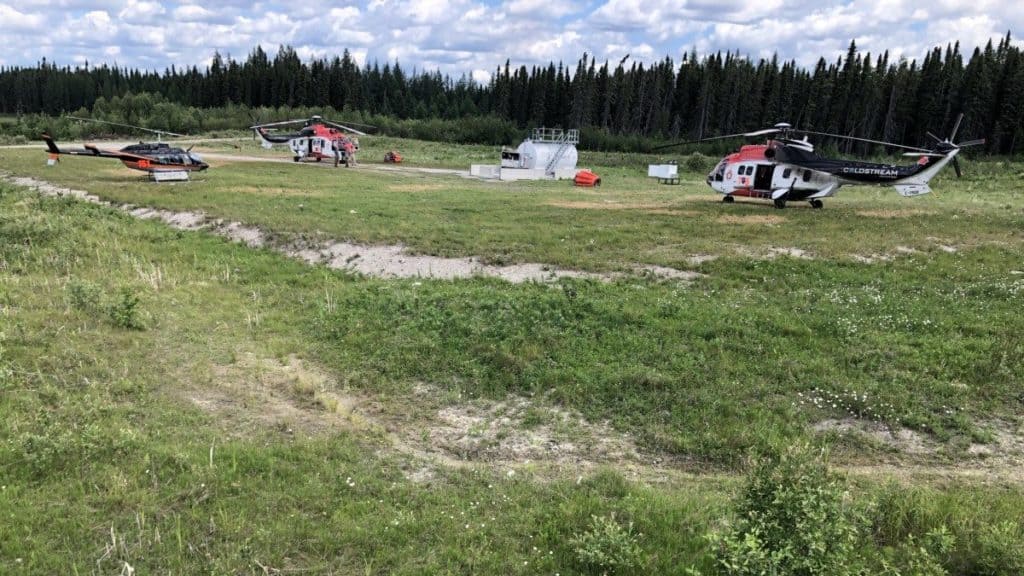
These fueling stations are usually located on the main apron and it’s a case of taxiing up close if your helicopter/airplane has wheels, or hovering and landing close in a helicopter with skids.
Just like your car, the pilot will insert a credit card or input a code into a keypad and begin fuelling via a long hose. These types of pump are usually quicker than a portable pump because they are powered off the airports’ electricity supply or are run by a gas-powered engine.
These types of installations are also very common at city heliports and will usually have a high-flow rate pump to ensure quick turnaround for minimal disruption to the aircraft passengers.
These bowser pumps are usually around the 20-50 gallons per minute / 90-227 liters per minute flow rate.
Bowser @30GPM/136LPM:
| Fuel Amount | Time |
|---|---|
| 22G / 100L | 44sec |
| 33G / 150L | 1m06sec |
| 44G / 200L | 1m28sec |
| 55G / 250L | 1m50sec |
| 88G / 400L | 2m56sec |
| 110G / 500L | 3m40sec |
| 165G / 750L | 5m30sec |
| 220G / 1000L | 7m20sec |
These types of refueling stations allow for the quickest refueling as the fuel hose can be quickly connected and the pumping began. Providing the installation has a high-flow fuel pump they can allow for fuel stops to be under 5-10 minutes in most helicopters.
3. Airport Fuel Truck
At most larger and manned airports a fuel truck will be available to drive to your location on the airport and replenish the aircraft with either Avgas or Jet A depending on what you requested.
Fuel trucks can be summoned by either calling the airport fuelers on a dedicated radio frequency, asking air traffic control to send the fuel truck to you, or by calling them on the telephone. The major problem with airport fuel trucks is that they can be busy and you may have to wait a considerable time for the truck to arrive. This unplanned delay can be frustrating for both the pilot and their customers/passengers!
Fuel trucks usually contain several pumps to cater for the type of aircraft to be fuelled. Hoses that connect under airplane wings use a pressurized system that can deliver up to 300 gallons per minute/1364 liters per minute per nozzle. Most helicopters however, can only be refueled using non-pressurized refueling, therefore the fuel truck can only dispense fuel at 50 gpm/227lpm.
Truck @50GPM/227LPM:
| Fuel Amount | Time |
|---|---|
| 22G / 100L | 26sec |
| 33G / 150L | 40sec |
| 44G / 200L | 52sec |
| 55G / 250L | 1m06sec |
| 88G / 400L | 1m44sec |
| 110G / 500L | 2m12sec |
| 165G / 750L | 3m15sec |
| 220G / 1000L | 4m24sec |
As you can see, the delivery rates for the airport fuel truck are by far the fastest but the waiting for the fuel truck to arrive can make it the slowest form of helicopter refilling, especially when the pilot and passengers are keen to get underway and a Boeing 737 has just landed and they take priority!
Where Do Helicopters Get Fuel?
Helicopters can be refueled with a mobile fuel truck at an airport, a fuel pump station at an airport, or via a bowser or fuel drums in remote locations. Most utility helicopters that refuel in remote locations carry onboard an electric fuel pump to move fuel from the browser or drum to the aircraft.
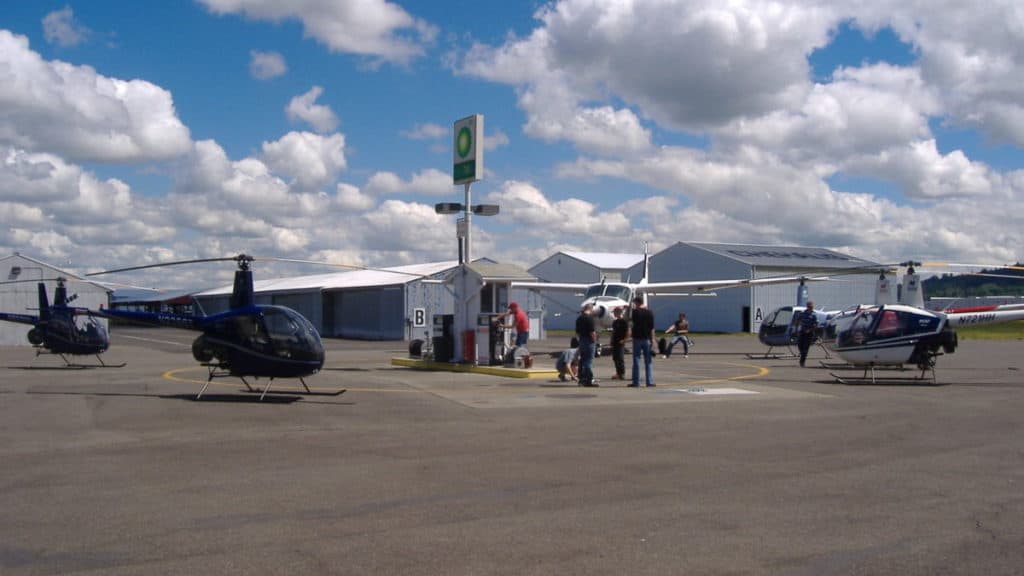
Due to the versatility of the helicopter, it can be used anywhere providing there is fuel. For helicopters flying around urban areas most pilots will call into nearby airports and heliports to refuel using either a mobile fuel truck, which they call out to their parking spot, or will land next to the airport fuel pumps, just like how you pull up to refuel your car.
For helicopters operating out in remote locations, the pilot will need to ensure that a fuel bowser or drums of fuel have been placed out in the field ahead of time. This can be accomplished by a contractor being hired to deliver the fuel to a specified location or by flying out drums ahead of time using a longline and a net or barrel slings.
If you would like to see how we refuel from a drum please watch the video below:-
When operating in remote locations fuel planning needs very careful attention to ensure there is fuel within reach, but you don’t spend too much time flying back and forth getting fuel when working with paying customers.
Many a time the helicopter is the emergency MedEvac machine for the customers and many will not let the pilot leave their crews alone in the wilderness to go and get fuel. For jobs like this, it is always best to fly out drums of fuel ahead of time to allow the pilot to refuel where the customers are working.
To Finish
Most helicopters will all have around a 21/2 – 3 hours useful flight time and depending on the speed of that helicopter it can cover hundreds of miles in that time.
The bigger the aircraft, the more fuel it will burn, the more the fuel bill will cost you, and the longer it will take to refuel. If you are looking at learning to fly then the Robinson R22 and the Guimbal Cabri are two of the best, and cheapest helicopters to fly.
I for one would much prefer the fuel bill of a Robinson R22 over that of a Bell 205 A-1++. They are both single-engine helicopters, but they both have very different roles and capabilities with prices to match!

